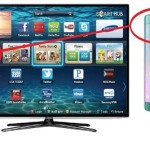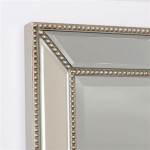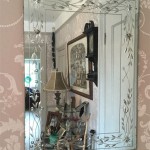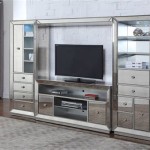How To Prevent Your Bathroom Mirror From Fogging Up
A fogged-up bathroom mirror is a common annoyance after a hot shower or bath. This fog occurs due to condensation, the process by which water vapor transitions into a liquid state. Warm, humid air from the shower comes into contact with the cooler surface of the mirror, causing the water vapor in the air to condense into tiny water droplets on the mirror's surface.
Several effective methods can prevent or minimize this fogging, ranging from simple, everyday practices to more involved solutions. These methods can be categorized into those that warm the mirror surface, those that create a barrier against moisture, and those that reduce humidity in the bathroom.
One of the simplest methods to prevent fogging is to run hot water over the mirror's surface before showering or bathing. This warms the mirror, reducing the temperature difference between the mirror and the surrounding air, thus minimizing condensation.
Another readily available solution involves applying a thin layer of soap to the mirror. Any standard bar soap can be used. After applying the soap, buff the mirror with a dry cloth to remove any visible residue. The thin, invisible layer of soap left behind creates a barrier that prevents water droplets from forming a continuous film, keeping the mirror clear.
Similar to the soap method, shaving cream can also be employed. A small amount of shaving cream, applied and buffed in the same manner as soap, can offer the same fog-preventing benefits.
Specialized anti-fogging sprays and wipes are commercially available and designed for this specific purpose. These products often utilize surfactants, which lower the surface tension of water, preventing droplet formation and promoting the formation of a thin, even film of water that doesn't obstruct visibility. Follow the manufacturer's instructions for the most effective application.
While the previous methods focus on the mirror itself, controlling the bathroom's humidity can also prevent fogging. Improving ventilation is a key strategy. Running an exhaust fan during and after showering or bathing helps to expel the moist air, reducing the likelihood of condensation.
Opening a window, if available, can achieve a similar effect, allowing the humid air to escape and be replaced by drier air from outside. This method is particularly effective in conjunction with an exhaust fan, creating cross-ventilation.
Taking shorter, cooler showers reduces the amount of water vapor released into the air, thereby minimizing the potential for fogging. While this may not be a desirable option for everyone, it can be a practical solution in situations where other methods are not feasible.
For a more permanent solution, consider installing a heated mirror. These mirrors contain an internal heating element that maintains the mirror surface at a temperature above the dew point, preventing condensation. Heated mirrors are typically wired into the bathroom's electrical system and offer a convenient, automated solution.
Another permanent solution is to install a demister pad. These pads are affixed to the back of the mirror and function similarly to heated mirrors by gently warming the mirror surface. Demister pads are generally easier to install than a fully wired heated mirror, often requiring only a simple adhesive backing.
Glycerine mixed with water is another effective method. A solution of approximately one part glycerine to three parts water, applied and buffed onto the mirror, can prevent fogging for a short period. This method requires more frequent reapplication compared to other solutions.
Choosing the best method depends on individual preferences, budget, and the specific bathroom setup. For quick, temporary solutions, hot water, soap, shaving cream, or anti-fogging sprays can be effective. For more long-term solutions, improved ventilation, shorter showers, heated mirrors, or demister pads are viable options. Understanding the underlying cause of mirror fogging—condensation—allows for the implementation of effective preventative measures, ensuring a clear reflection even after the hottest shower.
Regularly cleaning the mirror with a suitable glass cleaner can also help. A clean surface is less prone to attracting and retaining condensation. This, combined with one of the preventative methods described above, can significantly reduce the occurrence of fogging.

How To Keep Your Bathroom Mirror Fog Free The Creek Line House

3 Ways To Keep Mirrors From Fogging Up With Steam

How To Stop Bathroom Mirrors Fogging Up Direct

Tips To Prevent Your Bathroom Mirror From Steaming Up

3 Ways To Keep Mirrors From Fogging Up With Steam

Cleaning Fan Shares Quick And Easy To Keep Bathroom Mirrors Fog Free All You Need Is Dish Soap The Sun

7 Easy Ways To Stop A Bathroom Mirror From Steaming Up City

How To Stop Your Mirror From Fogging Up Home Repair Tutor

3 Ways To Keep Mirrors From Fogging Up With Steam

How To Keep Your Bathroom Mirror From Fogging Up








